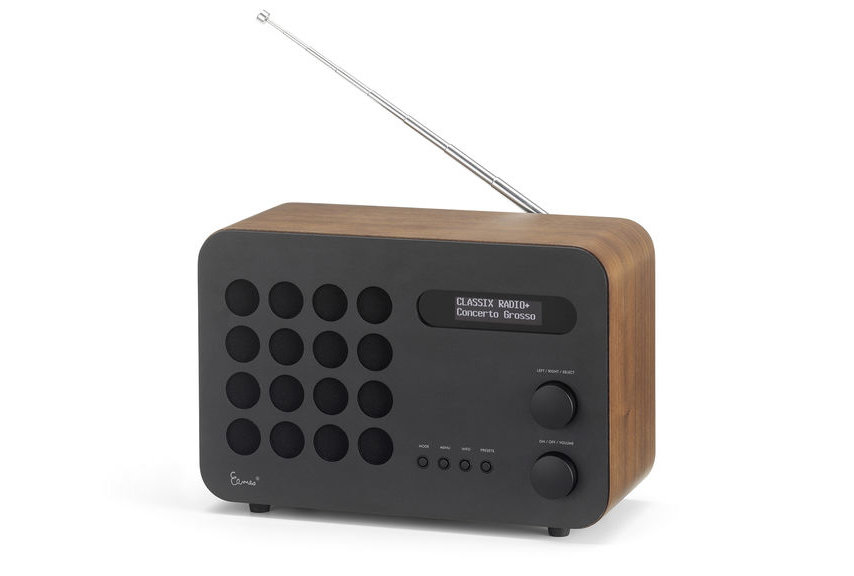A Never-Manufactured Eames Design for a Radio, Deemed Too Radical in 1946, Now Being Produced by Vitra
The Eames Radio has some modern day twists--and really bugs me
According to Vitra, in 1946 Charles and Ray Eames designed a tabletop radio with a housing made of bent plywood, and this "was rejected by the designated manufacturer, who wanted a 'normal design'."
Charles and Ray sent photographs of the prototype to the magazine 'Interiors'; matchbooks were included in the pictures as a scale reference. Their aim was to increase the acceptance of smaller, more modern devices.
 Enter a caption (optional)
Enter a caption (optional) Enter a caption (optional)
Enter a caption (optional)The device never saw manufacture. But Vitra apparently owns the design as they're now, some 70 years later, rolling it out--albeit with some design modifications:
 Enter a caption (optional)
Enter a caption (optional)As you can see it's got four extra buttons, presumably to manage the Bluetooth features Vitra's added, and of course there's an LCD.
 Enter a caption (optional)
Enter a caption (optional)A couple of things bug me about this. One, they've placed the Eames signature on the face of the radio. Firstly I think Charles and Ray would've found this tacky, and secondly, they didn't actually sign off on this modified design, so the signature is kind of a lie.
Second thing that bugs me: Limited-Edition-ness. They're only producing an arbitrary-sounding 999 of these, for $999 each. As always I find it ironic that the Eameses set out to produce good design for the masses, yet the modern-day rights holders to their designs seem to keep them frustratingly out of reach.
-
o1Favorite This
-
Q7Comment
K
{Welcome
Create a Core77 Account
Already have an account? Sign In
By creating a Core77 account you confirm that you accept the Terms of Use
K
Reset Password
Please enter your email and we will send an email to reset your password.


Comments
at $999 and with that feature set, this is just a flashy piece of 'I have money to burn' sculpture. lame. :(
Not to say I don't appreciate the overall design... however I agree that they kinda trashed it with a few elements that seem 'tacked on' or at least not very carefully considered
Why has no one ever built a copy of the Eames house. Did they have a death grip on its design?
From Vitra's standpoint, taking in $1M on revenue by selling 999 of these is one fantastic strategy /s
It always disappoints me when I see an Eames products selling at a luxury price. It goes completely against their primary motto which was to design with modest materials yet innovative fab methods in order to accommodate the average American's budget yet satisfy their need for beauty and comfort.
Totally agree on the signature comment. Other gripes: The knobs look larger and placed lower vs. the original. Also the small 4 buttons could be reconsidered.
Couldn't agree more